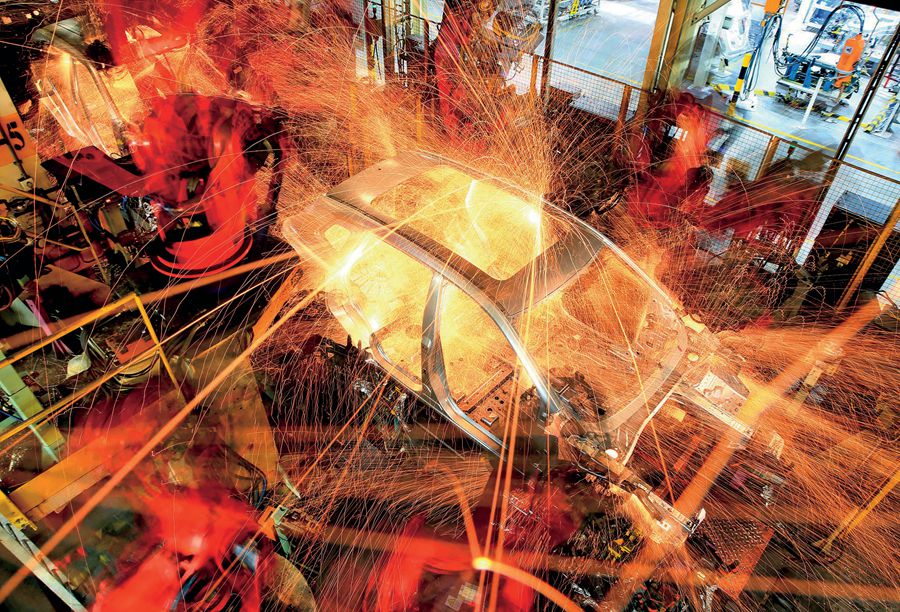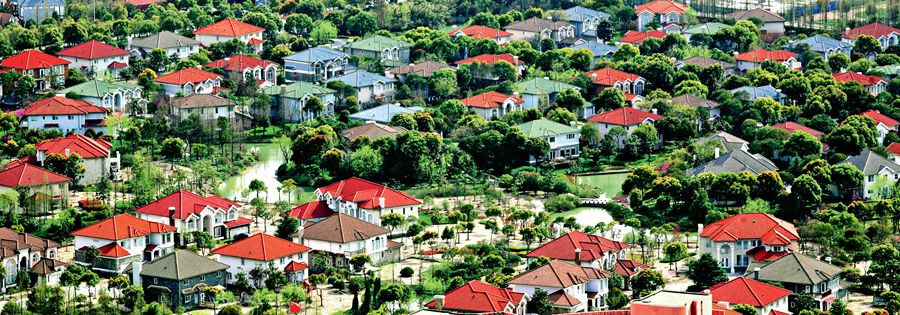JINQIAO is an export processing zone which was set up in September 1990. It is the epitome of Shanghai Pudong New Area’s economic reform and opening-up. Located in the center of Pudong, it covers an area of 40.38 square kilometers. With the Lujiazui Finance and Trade Zone located on the west side, Waigaoqiao Bonded Zone on the north, and the Zhangjiang Hi-Tech Park on the south, the area has its own geographical advantages.
As China’s first export processing zone, Jinqiao aims to promote the development of advanced manufacturing and production services. Looking at its development history, it can be seen how its aim was realized one step at a time. It was first called the Shanghai Jinqiao Export Processing Zone, then renamed the Shanghai Jinqiao Economic and Technological Development Zone in 2012. Two years later, it was officially included in the Shanghai free trade zone.
“Over the past 28 years, Jinqiao has gone through four stages of development. The first stage was export processing, second stage, traditional manufacturing, third, manufacturing and production services, and fourth, a new industrial system that is based on advanced manufacturing and strategic emerging industries while supporting production services has taken shape.”

The Lingang manufacturing base of Shanghai Automotive Industry Corporation, a model of Chinese car manufacturing. Wu Huiquan
In an interview, Yang Ye, director of the Jinqiao Management Bureau and Jinqiao Management Committee of the China (Shanghai) Pilot Free Trade Zone, said that over the past three decades, Jinqiao’s ability of keeping up with the times has led to the establishment of its four industrial systems in new-energy vehicles, mobile communications, intelligent manufacturing, and financial technology.
From a Manufacturer to an Intelligent Producer
Nokia Shanghai Bell is a witness of the transformation of Jinqiao from a manufacturing factory into a high-tech hub.
Now a market leader and industry innovator, Nokia Shanghai Bell was the first joint venture in the communications sector guided by the government in the 1980s.
“Nokia Shanghai Bell Co., Ltd. is a pioneer of telecommunications that emerged out of and grew up with the Pudong New Area, and helped build China’s modern telecommunications network,” Yuan Xin, chairman of Nokia Shanghai Bell, said.
On February 10, 1992, Deng Xiaoping came to the company’s workshop during his inspection tour in southern China. During his visit, he was attracted by an ion implanter, the first place where this technology was used in China and it was key to integrated circuitry production. Deng asked “whether it was capitalist or socialist.” Knowing that it was introduced from abroad, he added, “All the equipment, technology, and managerial skills used by us are socialist.”
In fact, as far back as the early 1990s, the company participated in the opening-up of Pudong. It moved there and built the world’s largest production base of SPC exchange, making great contributions to digitalization and program-controlling of China’s modern telecommunications network, and set an example for more high-tech enterprises to come.

Biyun International Community, a place many foreig-ners call home.
In 2002, it completed restructuring of its shareholdings and became the first joint venture in China’s telecommunications industry. In 2007, it integrated Alcatel with Lucent and established Bell Labs China team. In 2017, Nokia Shanghai Bell began its official operation. “Our company aims for better development with the support of advanced technology and the reform and opening-up policies,” Yuan Xin said with great confidence.
Changes in Jinqiao
In the past, 80 percent of China’s home appliances were manufactured at Jinqiao, including large household appliances (electrical products such as washing machines, kitchen appliances, air conditioners, and refrigerators), textiles, food, etc. As a result, the reputation of Jinqiao in the minds of the general public has been that of “a manufacturer of China’s world renowned brands.”
Jinqiao has been undergoing changes so that it can achieve greater achievements. General Motors is a good example of this. After relocating its Asia-pacific headquarters, global R&D center, and sales center in Jinqiao, GM developed from a vehicle manufacturer into an enterprise with the multifunction facilities of R&D, production, sales, services, exhibition, and settlement of accounts.
Currently, Jinqiao is home to 20 regional headquarters of multinational companies, and 55 out of the world top 500 enterprises have invested in 102 projects here. Consequently, this has brought in US $25 billion of foreign investment.
The layout of Jinqiao is different from regular urban areas that are densly dotted with high office buildings. Its ecological Office Park which is designed like a garden has attracted a large number of domestic and foreign R&D institutes and enterprises to set up regional headquarters. Having a cluster of production services, the Office Park was ranked first in the High-tax-return Park in Pudong New Area in 2017 with an annual tax return of RMB 12.3 billion, or US $1.8 billion.
Today, the ratio of advanced manufacturing businesses and production service providers stands at 2:3. The advantages of the two-wheel-drive economic development is quite evident, gradually changing Jinqiao from a manufacturer to an intelligent producer.
In 2017, Jinqiao experienced a steady and rapid economic growth, with a gross industrial output value of RMB 234.295 billion, or US $34.455 billion, a year-on-year increase of 23.7 percent. Its proceeds of business reached RMB 689.912 billion, or US $101.458 billion, a year-on-year increase of 10.6 percent. Its tax revenue was RMB 50.857 billion, or US $7.479 billion, a year-on-year increase of 13 percent. In addition to this, it also contributed a local fiscal revenue of RMB 6.105 billion, or US $897.794 million, a year-on-year increase of 37.3 percent, and its total net profit reached RMB 30.442 billion, or US $4.477 billion.
One thing that makes the local people even more proud is that Jinqiao is friendly to businesses and local residents alike. The big Biyun International Community occupies as large as four square kilometers, housing more than 3,000 foreign households and nearly 30,000 foreigners. It was honored with the award “Model of China’s Living Environment” by the Ministry of Housing and Urban-rural Development, and is recognized as a model of an international community, which by integrating industry and city creates a good environment for both workers and residents.
In the future, Jinqiao will strive to become a model of industrial transformation and a leader of intelligent manufacturing, an innovator in the functions of an urban sub-center and a leader in green and low-carbon development. In Yang Ye’s own words, “Our aim is to be an advanced manufacturing base for Made in Shanghai brands, an integral part of helping transform Shanghai into a globally outstanding city.”

